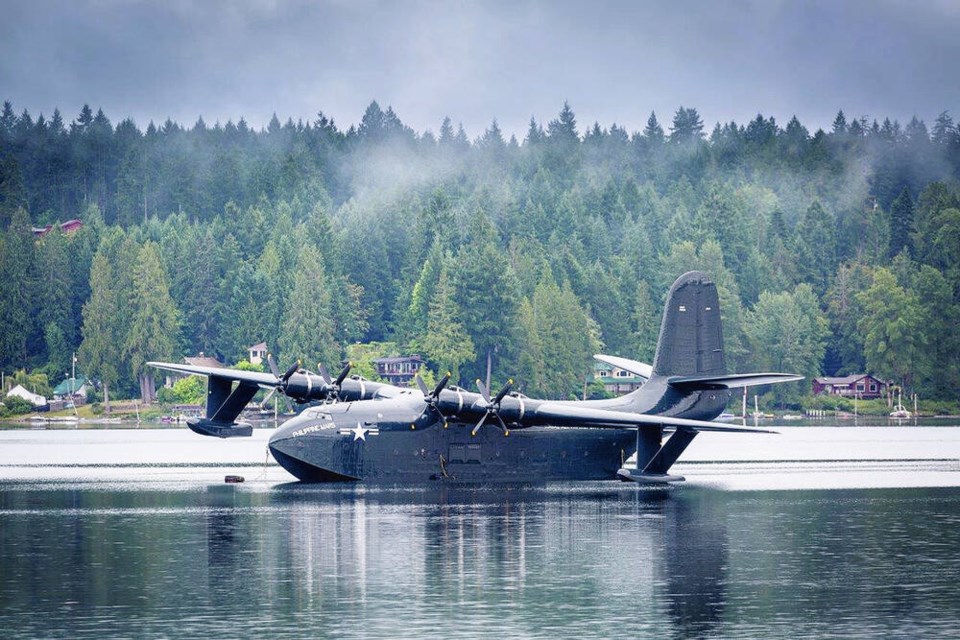The massive Philippine Mars is getting ready to fly to its new home at the Pima Air and Space Museum in Tucson, Arizona, after months of work to make the retired water bomber air-worthy.
The plane, which was retired more than a dozen years ago, has been stored outdoors at a base next to Sproat Lake near Port Alberni.
It could fly south the week of Nov. 18, although the date depends on the weather, Coulson Aviation chief executive Wayne Coulson said Wednesday. Coulson said fly-over information will be posted on the company’s Facebook page.
It’s hoped that the plane will fly above the only other surviving Martin JRM Mars, the Hawaii Mars, now at its permanent home in B.C. Aviation Museum in Sidney, although that’s also weather-dependent, Coulson said.
Crews have put in about 8,000 hours over several months to get the retired plane ready to fly again, including moving propellers from the Hawaii Mars to the Philippine Mars, Coulson said.
The exchange was arranged when the Hawaii Mars was donated to the B.C. Aviation Museum, because the Philippine Mars faces a long flight to southern California, he said.
“We overhauled the props because that is probably one of the most concerning maintenance items on the aircraft.”
This week, the water bomber was once again on Sproat Lake, to the delight of local residents who enjoy watching the 120-foot-long plane with its 200-foot wing-span.
“We’ve been doing high-speed taxi runs with it and it’ll be out the rest of this week and next week,” Coulson said.
Coulson Aviation is arranging approvals from Transport Canada to move the plane to the U.S., he said.
Once it gets the OK to fly, the plane will head to San Francisco, where arrangements are being made with U.S. officials to park it along the shoreline for people to see, he said.
After one night in San Francisco, the plane will fly to San Diego for two or three days, before heading to its new home in Tuscon, Arizona at the Pima Air and Space Museum, which acquired the water bomber earlier this year.
A statement from the museum, home to approximately 400 aircraft, said the Second World War-era aircraft will be preserved “for decades to come.”
The Hawaii Mars flew from Sproat Lake to Sidney in August, an event captured in countless images posted on social media by enthusiastic fans of the old red-and-white plane.
The Mars aircraft were constructed between 1942 and 1947 and carried cargo between Hawaii and the Pacific Islands to support the U.S. navy during the Second World War.
The planes were then used during the Korean War for medical air-transport lifts between Hawaii and California. They also carried cargo between Hawaii and California before being decommissioned in 1956.
A B.C. forestry consortium later purchased the remaining four and converted them to water bombers to fight forest fires. Each could carry 7,200 gallons of water.
In 2007, Coulson Aviation bought the two remaining Martin JRM Mars planes, the Hawaii and the Philippine, for firefighting duties, further cementing their status in B.C.
Coulson, a diversified family company based in Port Alberni, has expanded its firefighting work to international clients, including Australia, South America and the U.S.
Its high-tech, night-flying quick-response helicopters were showcased in 2021 on the CBS news program 60 Minutes.





